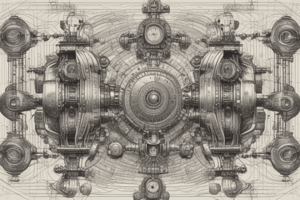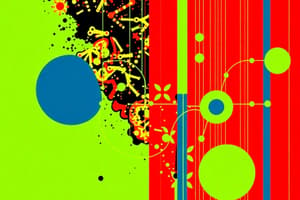Podcast
Questions and Answers
What does 'DFA' stand for in automata theory?
What does 'DFA' stand for in automata theory?
- Dynamic Finite Automata
- Directed Finite Algorithm
- Distributed Finite Automaton
- Deterministic Finite Automaton (correct)
Which property distinguishes a DFA from a Nondeterministic Finite Automaton (NFA)?
Which property distinguishes a DFA from a Nondeterministic Finite Automaton (NFA)?
- Ability to have multiple transitions from a state on the same input (correct)
- Use of regular expressions for transition functions
- Inability to recognize regular languages
- Lack of a start state
What does a DFA do when it reaches the end of the input string?
What does a DFA do when it reaches the end of the input string?
- Halts and rejects the input if in a non-accepting state
- Continues processing the input string indefinitely
- Switches to a different start state and continues processing
- Halts and accepts the input if in an accepting state (correct)
Flashcards are hidden until you start studying
Study Notes
DFA Basics
- DFA stands for Deterministic Finite Automaton.
Distinction from NFA
- The key property that distinguishes a DFA from a Nondeterministic Finite Automaton (NFA) is that a DFA has a unique transition for each input symbol in each state, whereas an NFA can have multiple transitions.
DFA Operation
- When a DFA reaches the end of the input string, it either accepts or rejects the string based on the state it is in, with the acceptance of the string depending on whether the final state is an accepting state or not.
Studying That Suits You
Use AI to generate personalized quizzes and flashcards to suit your learning preferences.




